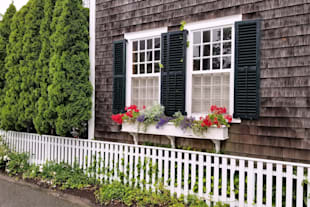Sash windows add a touch of timeless elegance to any property. These classic architectural features have graced homes for centuries, contributing to their charm and character. Yet like any part of a house, sash windows can develop issues over time.
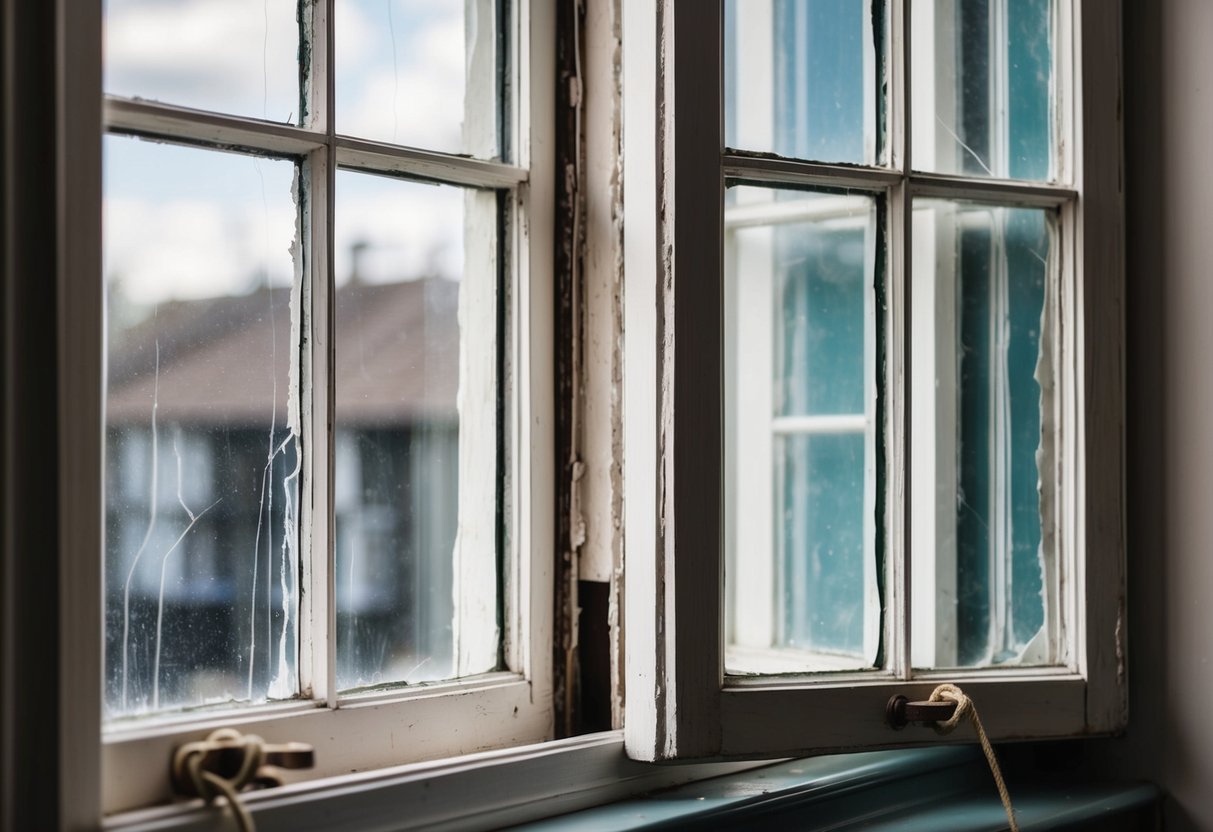
The five most common issues with sash windows are sticking, draughts, rot, poor operation and condensation. These issues can affect the windows’ function and aesthetics, potentially diminishing the property’s appeal. Fortunately, many of these problems have straightforward solutions that homeowners can tackle themselves.
Understanding how to spot and fix these common sash window issues can help maintain the beauty and functionality of these cherished features. By addressing problems early, property owners can preserve the original character of their homes whilst ensuring their windows remain in top condition for years to come.
Identifying Common Issues with Sash Windows
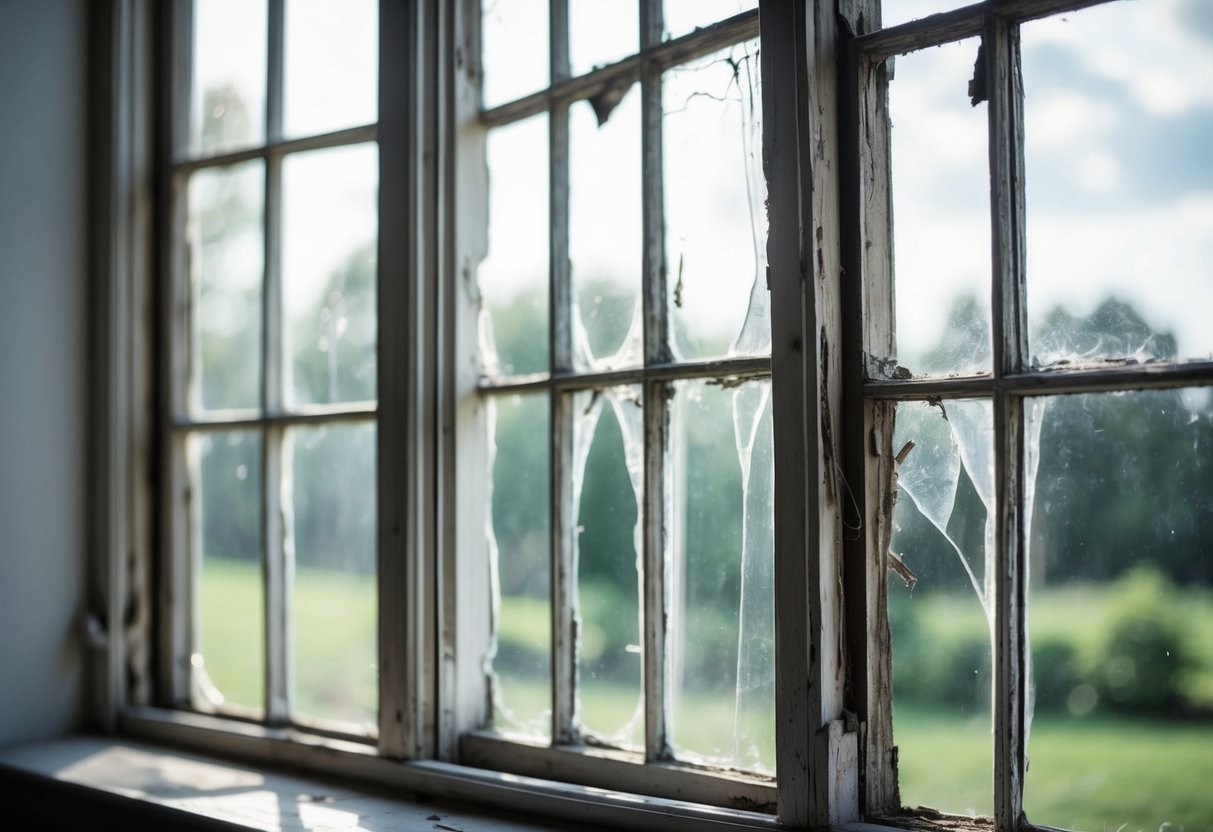
Sash windows can develop several issues over time that affect their function and appearance. Recognising these problems early allows for timely repairs and maintenance.
Wear and Tear on Timber Frames
Timber sash windows often face deterioration due to constant exposure to the elements. Sun, rain, and temperature changes can cause the wood to expand, contract, and warp. This leads to gaps between the frame and sashes.
Paint may start to peel or crack, leaving the wood exposed. Joints can become loose, affecting the window’s structural integrity. Wooden parts might splinter or develop rough patches.
Regular inspections can catch these issues early. Look for signs of decay, loose joints, or damaged paint. Addressing these promptly can prevent more serious damage.
Issues with Sticking and Sliding Mechanism
A common complaint with sash windows is difficulty in opening and closing. This often stems from problems with the sliding mechanism.
Paint build-up on the runners can hinder smooth movement. Dirt and debris in the channels may also cause sticking. Warped frames can make sashes sit at odd angles, further impeding operation.
Sometimes, the problem lies with swollen wood due to moisture absorption. This can make the sashes too tight in their frames.
Check for smooth gliding when opening and closing the window. If you notice resistance or hear scraping sounds, the sliding mechanism likely needs attention.
Decay and Moisture Damage
Moisture is a major enemy of timber sash windows. It can lead to rot, mould, and severe structural damage if left unchecked.
Look for soft spots in the wood, especially around the bottom rail and joints. These areas are most prone to water ingress. Discoloration or a musty smell can also indicate moisture problems.
Fungal growth may appear as dark patches or fuzzy spots on the wood. This is a clear sign of advanced decay.
Check the glazing putty as well. If it’s cracked or missing, water can seep into the wood behind it.
Addressing moisture issues quickly is crucial to prevent widespread rot and maintain the window’s integrity.
Faulty Cords and Pulley System
Many sash windows rely on a system of cords, pulleys, and weights for smooth operation. Over time, these components can wear out or break.
Frayed or snapped cords are a common issue. This can cause the sash to slam shut or become difficult to open. Stuck pulleys prevent the window from staying open at desired heights.
Listen for unusual noises when operating the window. Squeaking or grinding sounds often indicate problems with the pulley system.
Check if the sashes stay in place when opened. If they don’t, the balance mechanism might need adjustment or replacement.
Regular lubrication of moving parts can help prevent these issues and extend the life of the system.
Draughts and Poor Insulation
Gaps and poor sealing in sash windows can lead to draughts and heat loss. This affects both comfort and energy efficiency.
Feel for cold air around the edges of the window frame. Look for daylight coming through when the window is closed. These are signs of poor sealing.
Rattling sashes in windy conditions also indicate gaps. Old or damaged weatherstripping contributes to this problem.
Single-glazed sash windows naturally have lower insulation properties. However, even these should not allow significant draughts when closed properly.
Addressing draught issues can greatly improve the window’s performance and your home’s energy efficiency.
Sash Window Maintenance for Longevity
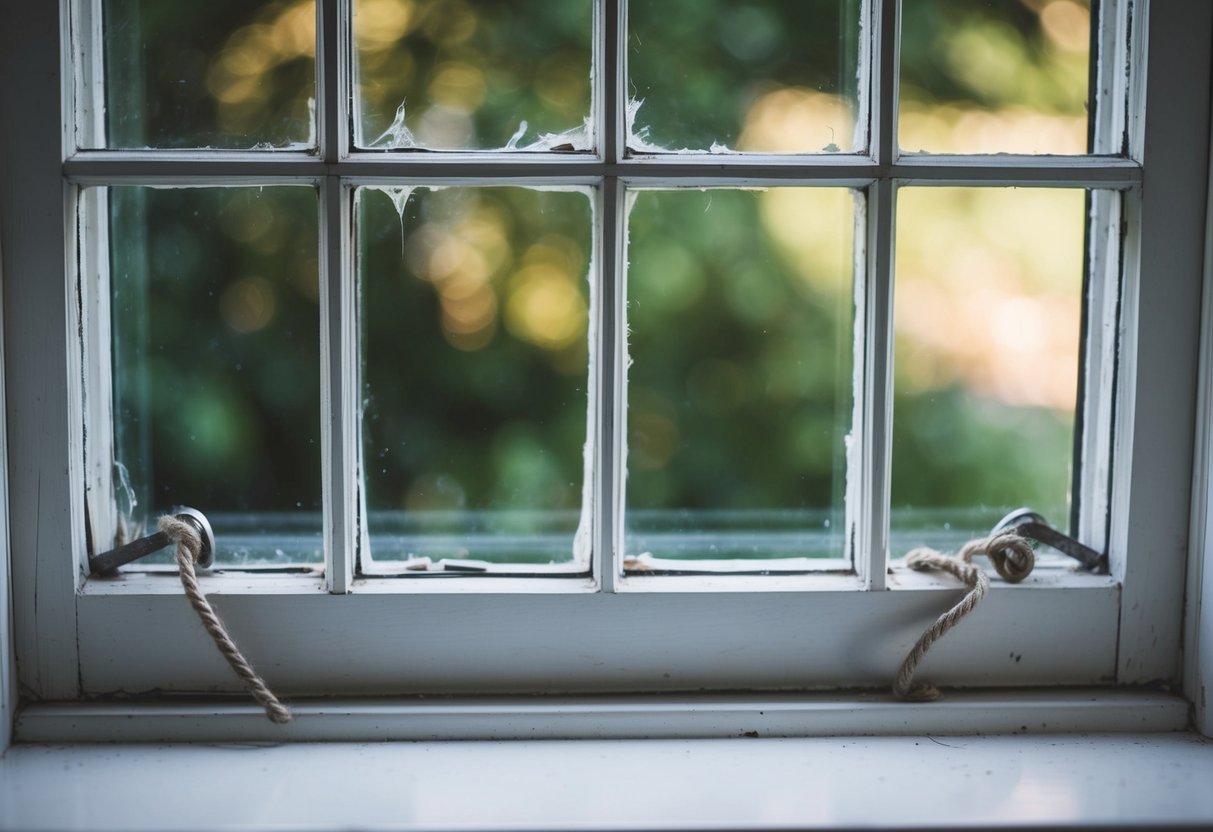
Proper care of sash windows helps them last longer and work better. Regular upkeep stops small problems from getting bigger and keeps your windows looking nice.
Regular Inspections and Timely Repairs
Check your sash windows often for signs of wear. Look for cracks, rot, or loose parts. Fix small issues right away to avoid costly repairs later.
Clean the tracks and moving parts. Use a soft brush to remove dirt and debris. This helps windows slide smoothly.
Apply a silicone spray to the tracks and pulleys. This reduces friction and makes opening and closing easier.
Check the cords and replace them if they’re frayed or broken. Strong cords are key for safe window operation.
Tighten any loose screws or fittings. This keeps the window stable and working well.
Paintwork and Protection
Paint protects wood from moisture and rot. Sand the window frame lightly before painting.
Use a good quality exterior paint. Apply thin, even coats for the best protection.
Don’t paint the moving parts. Too much paint can make windows stick.
Seal gaps and cracks with caulk. This stops water getting in and causing damage.
Clean and repaint every 5-7 years. This keeps the wood in good shape.
Consider using a water-repellent treatment on wooden frames. It adds extra protection against damp.
Reinforcing Window Security
Install window locks. These make it harder for intruders to get in.
Use sash stops. They let you open the window a bit for air but keep it secure.
Replace old or weak glass with toughened or laminated panes. This improves security and safety.
Fit sash chains. They stop the window opening too far, which is good for child safety.
Think about secondary glazing. It boosts security and helps with energy efficiency too.
Check that all locks and fittings work properly. Replace any that are worn or broken.
Proper Repair Techniques for Sash Windows
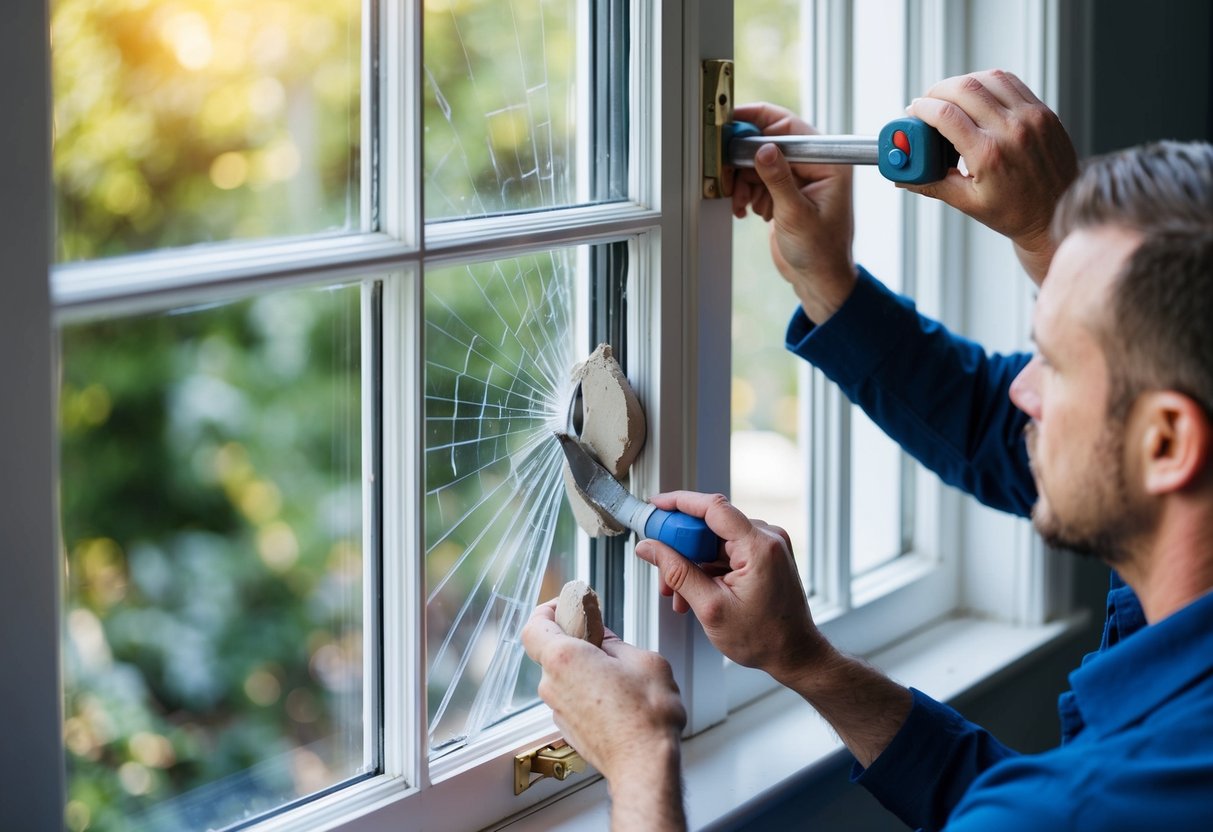
Sash window repair requires specific skills and techniques to address common issues. The right approach can restore both function and beauty to these classic windows.
Dealing with Wood Decay and Damage
Wood decay often affects older sash windows. Inspect frames and sashes for soft spots or visible rot. Remove decayed wood with a chisel or router. Apply a wood hardener to strengthen remaining timber. Fill gaps with epoxy wood filler, shaping it to match the original profile.
For extensive damage, consider splicing in new wood sections. Use matching timber and join pieces with waterproof glue. Sand repaired areas smooth and prime before painting to protect against future moisture.
Regular maintenance prevents decay. Clean windows yearly and repaint every 3-5 years. Use quality exterior paint and apply it to all wood surfaces, including hidden areas.
Upgrading to Energy-Efficient Solutions
Draughty sash windows waste energy. Add weatherstripping to reduce air leaks. Install brush seals along the sides and meeting rails. Use V-strip or spring metal weatherstripping in the channels.
Replace single glazing with double-glazed units for better insulation. Slim double glazing fits existing frames while keeping the traditional look. Secondary glazing is another option that adds a second pane inside the existing window.
Restore or replace damaged putty around glass panes. Use linseed oil putty for traditional windows. Allow it to skin over before painting.
Restoring Functionality with Cord Replacement
Broken sash cords stop windows from opening smoothly. To replace them:
- Remove the staff bead (inner trim piece)
- Take out the lower sash
- Remove old cords and weights
- Thread new cords through the pulley
- Attach cords to weights and sash
- Reassemble the window
Choose waxed cotton sash cord for durability. Adjust cord length so weights hang just above the sill when the sash is closed. Test the sash movement before replacing the staff bead.
Lubricate pulleys with dry lubricant to ensure smooth operation. Clean out debris from channels. Consider installing sash locks for added security when repairs are complete.
Enhancing Performance and Aesthetics
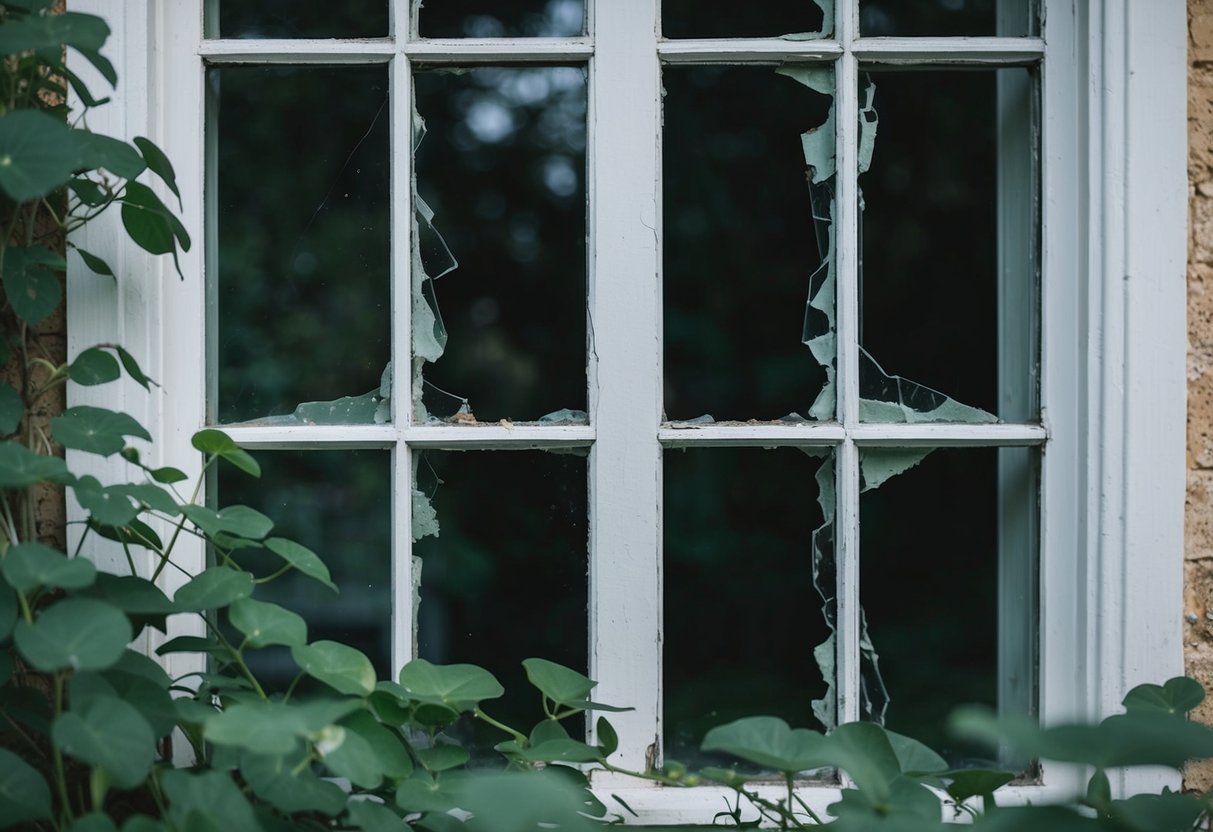
Sash windows can be upgraded to improve their function and look. Smart changes boost energy efficiency, cut noise, and keep the classic style.
Draught-Proofing and Insulation Upgrades
Old sash windows often let in cold air. Adding weatherstrips to the edges stops draughts. Foam or brush seals work well and don’t show.
Double-glazing fits two panes of glass in each sash. This traps air and keeps heat in. It also blocks outside noise.
Thick curtains or shutters add more insulation. They look nice and stop heat loss at night.
Noise Reduction and Sealant Application
Sash windows can let in street noise. Applying sealant to gaps cuts down on sound.
Silicone caulk works well for small cracks. It’s easy to use and lasts a long time.
For bigger gaps, expanding foam might work better. It fills spaces and blocks noise.
Adding rubber gaskets around the sashes also muffles sound. They create a tight seal when the window closes.
Preserving Sash Window Charm with Aesthetic Updates
Sash windows add charm to homes. Keeping them looking good is key.
Repainting freshens up old windows. Sand the wood first for a smooth finish. Use exterior paint that can handle weather changes.
Replace worn sash cords with new ones. This makes the windows work better and look neater.
Keep classic features like glazing bars and horns. They add to the window’s beauty. Clean glass and polish brass fittings to make them shine.
Choosing the Right Service for Sash Window Repairs
When selecting a sash window repair service, look for companies with proven experience. Ask about their expertise in handling different types of sash windows.
Check if the service offers both repairs and replacements. A good provider can assess whether fixing or replacing is more cost-effective for your windows.
Make sure the company uses quality materials. This ensures longer-lasting repairs and better window performance.
Consider services that offer upgrades like draught-proofing or double glazing. These can improve your windows’ energy efficiency.
Look for providers who can preserve original features. This is crucial if you want to maintain your home’s character.
Compare quotes from multiple services. But remember, the cheapest option isn’t always the best value.
Ask about guarantees or warranties on repair work. This shows the company stands behind their craftsmanship.
Check reviews and ask for references. Previous customers can give insight into the service quality and reliability.
Ensure the company is properly insured and licensed. This protects you in case of any issues during the repair process.

